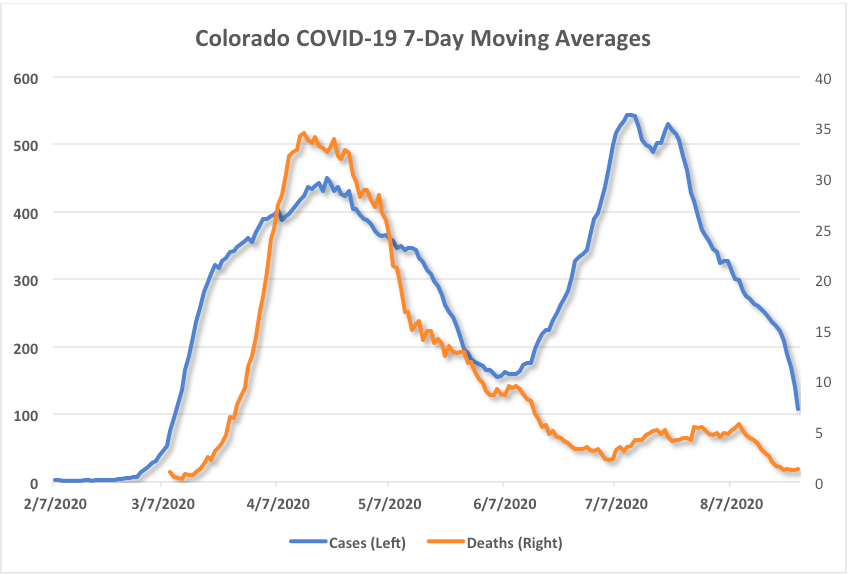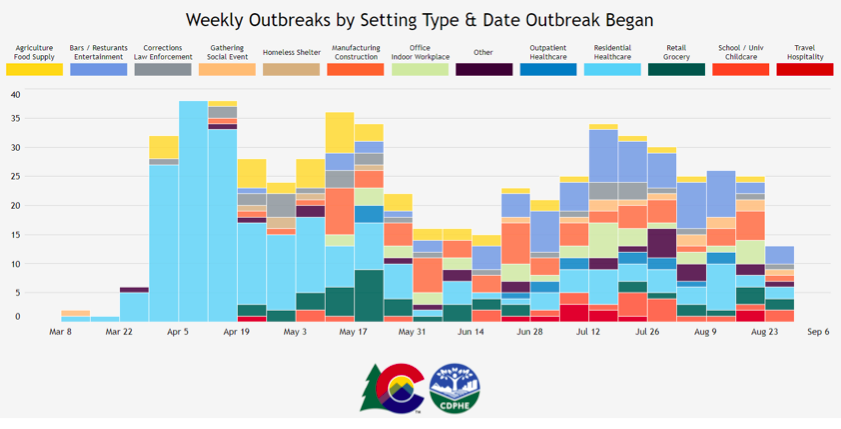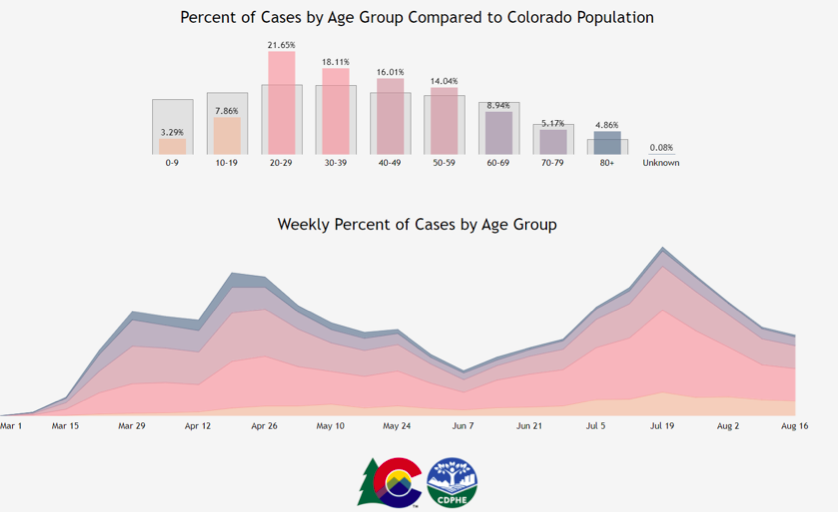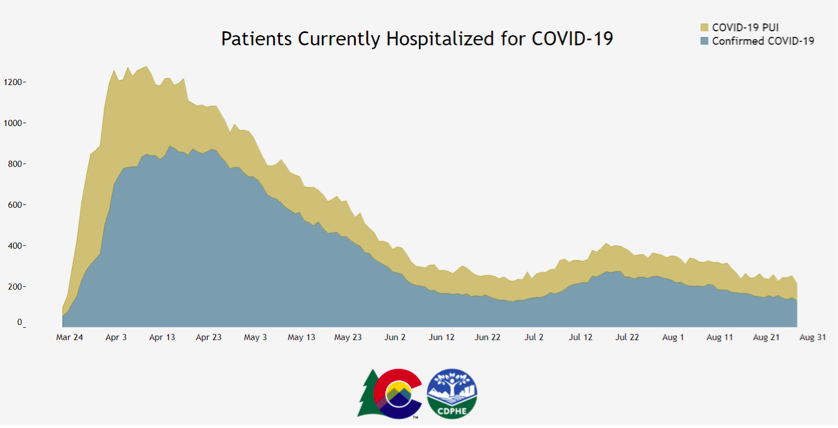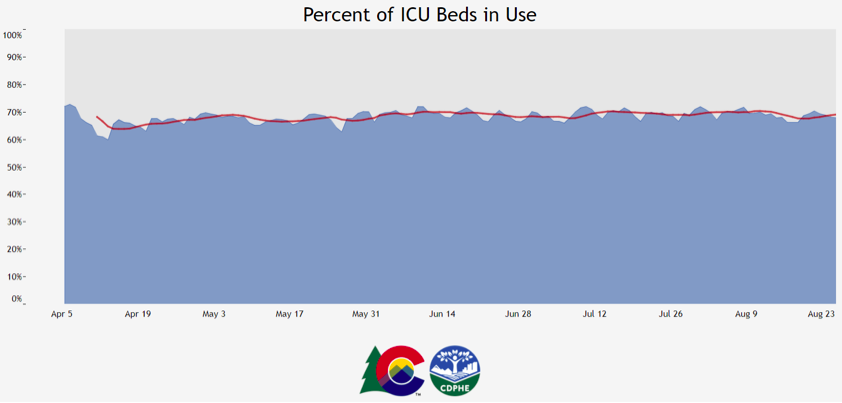Despite frequently being cited as a success story, the arc of the novel coronavirus in Colorado has followed a pattern similar to that of other states.
The overall pattern suggests that while we avoided some of the catastrophic errors made by the governors of New York and New Jersey, the actual effectiveness of other measures is, at best, unknown. It also suggests that the emergency has been dealt with, and it is time to begin treating COVID as an ambient threat like so many others.
To begin with, the number of cases in this “second wave” was higher than the peak in April, even as the average number of daily deaths attributed to the disease (right axis) never exceeded 5:
To some extent, this is a result of increased testing. Denver’s Mayor Michael Hancock, for instance, has been aggressively promoting the free testing made available by the state and the city, and testing is available to essentially anyone who wants it. In April, tests were less available, and someone needed to be exhibiting symptoms in order to be tested.
Additionally, the earlier peak was characterized by older victims, whom we now know to be at extremely elevated risk, with many more of those outbreaks originating in nursing homes. Fortunately, things weren’t as bad here as they were in New York, New Jersey, and Michigan, where governors ordered nursing homes to take COVID-infected patients, often resulting in many more deaths in those confined settings.
In this second wave, a far narrower sliver of cases came from the age 70+ population, although they still account for a disproportionate number of deaths. Nevertheless, looking back at the outbreaks graph, we see that many more of the outbreaks were occurring in bars, restaurants, and entertainment venues, which tend to cater to a younger clientele.
Most importantly, we haven’t come close to overwhelming the hospital system. The number of hospitalizations, while it rose in July, never came close to the number we saw in April. Likewise, the percentage of ICU beds in use has barely moved for months. This indicates that the people being hospitalized were, in general, being successfully treated outside of the ICU.
All of this adds up to COVID not being an emergency situation here in Colorado any longer, just a situation that needs to be managed, and that we are managing it effectively.
Nevertheless, the legal state of emergency remains in effect. The Democrat-controlled legislature failed to either end or limit the state of emergency during the abbreviated session. So Governor Polis, county health departments, and various municipal governments, including Denver, continue to rule by fiat. Mandatory masking and social distancing requirements greatly increase the per-customer overhead to almost all food and service businesses, for example.
This is true even as the economic cost to Coloradans continues to linger. The state’s unemployment rate is at 7.4%, down from 10.6% in June. However, that obscures a lower labor force participation rate, and an employment-to-population ratio still languishing at 61.7%, far below February’s 67.7%. In addition, many of those working are working from home, and picking up electricity costs that had been borne by their employers. And there is every reason to think that, as tax revenue continues to lag, governments will seek to raise taxes on those citizens who are already struggling to make ends meet.
It’s time for the state of emergency to end, and to get back to business, as close to normal as possible.
Joshua Sharf, a Denver resident, is a regular contributor to Complete Colorado.

